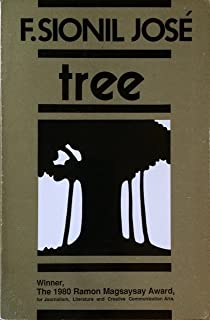Graham Greene’s The Honorary Consul is a deceptively ambitious project. And this applies as much to the reading of this great work as to its writing. The novel addresses some great themes on a multiplicity of levels and in every case succeeds in both illustrating issues and provoking thought via a deceptively simple story of kidnap and espionage.
The Honorary Consul is set in Argentina. We are in the north, far from the sophistication of cities, on the banks of the Paraná River, cheek by jowl with Paraguay. And over that border there is the iron-fisted rule of the General, an oppression that has created a social orderliness based on fear and persecution.
About twenty years ago, a victim of that oppression, an Englishman resident in Paraguay, put his wife and young son onto a ferry to Argentina. He stayed behind to rejoin the struggle and was not heard of again.
The wife took up residence in Buenos Aires and devoted herself to gossip and sweet eating. The son, Eduardo Plarr, went to medical school, qualified and, at the start of the novel, is practising his profession in that small, provincial, northern town. His thoughts regularly cross the river to contemplate his father’s possible fate.
It is by virtue of his father’s nationality that Eduardo calls himself English.
Eduardo is one of just three English residents in the town. Humphries used to be a teacher, while the third, Charles Fortnum, has the title of Honorary Consul. His role is minimal, of course, and his status is less than that. But he ekes a few bob out of the role by the resale of the new car he has a right to import every two years.
Charles is a heavy drinker, preferring whisky of all types, but willing to drink almost anything in the right measure. He and the other two English residents frequent the same bars, restaurants and brothels, and so they also share the same sources of pleasure. Eduardo is surprised to learn that Charles, a sixty-year-old slob, has married one of the girls – a twenty-year-old stripling – from their favoured haunt. He wonders how it will all work long before he becomes her doctor and thereby provides the most thorough examination that medical science knows. When she falls pregnant, she at least is sure whose child it is.
And then one day visitors from Paraguay bring news of Eduardo’s father. They have a plan. There is to be a visit by the American ambassador. Charles will actually have to do something. There is to be a visit to a local site. The group of opportunistic Paraguayans plan a kidnap. They will hold the ambassador until named detainees in Paraguay, Eduardo’s father amongst them, are released. They carry out their threat, but bungle it. As Charles Fortnum’s car passed by, they mistook his CC plate for CD and thereby kidnapped the wrong man.
Instead of an American ambassador, they have a merely an honorary consul, and one without much honour. El Tigre, their remote, anonymous commander is clearly not pleased. We never get to know much about El Tigre, but then perhaps we know more than we think.
As ever in Graham Greene, the characters are presented with moral dilemmas. In The Honorary Consul these span the domestic, the religious, the familial and the political.
A short review can do no justice to either the complexity of the ideas or the economy and subtlety of the writer’s treatment of them. Tragedies ensue and there is even a happy ending of sorts.
A former priest – there’s no such thing as a former priest! – grapples with the contradictions of liberation theology on the one hand and the obedience demanded of servile duty on the other. Graham Greene does not resolve all the dilemmas he raises. Good writing, after all, is not about answering questions. But it does necessarily involve asking the right ones.
The Honorary Consul is the work of a writer of genius at the height of his powers. It is also the work of a man with a keen sense of politics and morality. And it is also surely one of the few books that all people should list as a must read.

























